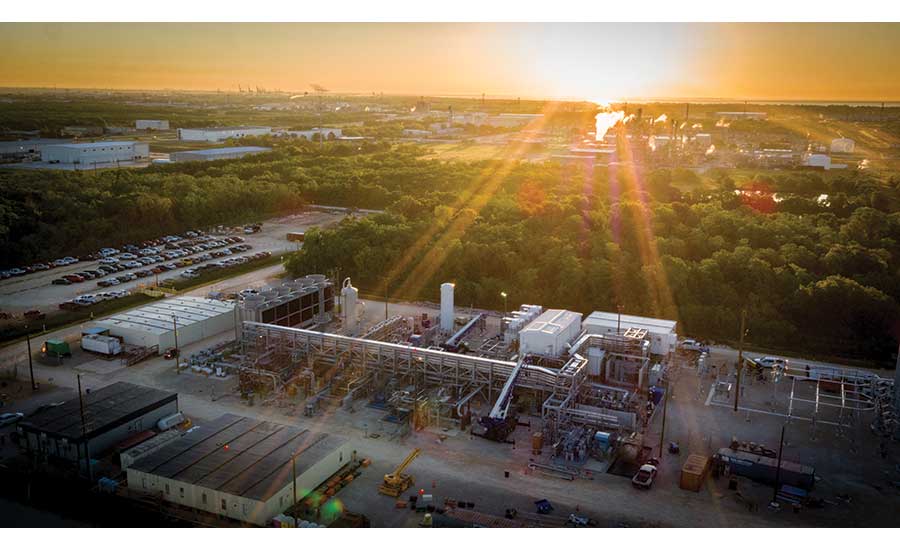New Carbon-Capture Technology Could Be Game-Changer for Fossil Fuels

A new technology being tested in Texas uses captured CO2 gas to power turbines.
PHOTO COURTESY OF MCDERMOTT INTERNATIONAL
A new demonstration power plant could change the economics of carbon capture and sequestration (CCS). The 25-MW combined-cycle natural gas plant in LaPorte, Texas, called Net Power, incorporates CO2 generated back into the creation of energy and is the world’s only industrial-scale supercritical CO2-based power plant.
“I think if it works as they say it will, it will be a major step forward. It would really reduce the cost of doing CCS, especially with gas turbines,” says Howard Herzog, a senior research engineer at the Massachusetts Institute of Technology who specializes in CCS.
The success of the LaPorte plant, in addition to the 45Q tax credit included in the 2018 budget package signed into law in February, could help a technology that has had billion-dollar missteps like the $7.5-billion Kemper County coal CCS facility in Mississippi.
Net Power, which is currently undergoing testing and validation, is based on the Allam Cycle, which uses a new, first-of-kind commercial-scale turbine and combustor developed by Toshiba specifically for the process. The Allam Cycle eliminates most emissions from natural gas power generation without scrubbers by using CO2 as a working fluid mixed with natural gas or syngas to drive a combustion turbine. The rest is piped out for other applications, such as oil recovery.
Net Power LLC is a joint venture team that includes 8 Rivers Capital, which owns the patent for the Allam Cycle; McDermott International; and Exelon. The group invested the $140 million needed for the demonstration plant.
The project, which broke ground in March 2016, began testing this May. “It’s going well so far,” says Brian Allen, program director, Net Power Commercial Plant Development for McDermott. But full testing won’t be complete until the end of the year.
Allen says the plant is easily dispatchable and can enhance the reliability of the electric grid by supporting intermittent renewable power.
Andy Maxson, manager of the advanced fossil, CO2 capture, utilization and storage team for the Electric Power
Research Institute, a nonpartisan research group that evaluates different electric power technologies, says most utilities are taking a wait-and-see approach to the technology. “It looks good on paper … the system has efficiencies that look like a natural gas combined cycle without CO2 capture.” Still, testing and validation is a necessary step, he says.
Allen says Net Power will be most economical with a 300-MW plant. Once the plant is validated, Net Power will begin looking for a client for the first commercial-scale plant, he says.
Changing the Equation
With a few exceptions, CCS has failed to take off in the power sector. Existing CCS technologies make plants more expensive to operate, which has prevented CCS from becoming widespread in the power sector, Herzog says. Because Net Power emits no CO2 and actually produces some for sale for enhanced oil recovery, the costs come down, he explains.
Despite the missteps, CCS projects continue to move forward, including 13 projects that received $61 million in research funding from the Energy Dept. earlier this year. Net Power, however, was developed without any federal funds.
New CCS projects like Net Power could benefit from an expanded CCS tax credit approved by Congress earlier this year. Companies that capture carbon can earn a tax credit of between $35 to $50 per ton, more than double a previous CCS credit and free of a cap on the credit.
Some environmental groups say Net Power and similar projects have the potential to be game changers. George Peridas, senior scientist with the Natural Resources Defense Council, says CCS can be an essential tool in avoiding the worst of climate change. Net Power “is a departure” from the way power has traditionally been generated. “We could be about to experience something ground breaking [with Net Power], or it could prove more difficult than we thought,” he says.


